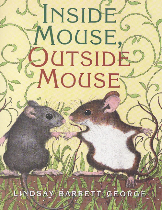 Type of emotional/crisis issues addressed: PARENT-CHILD RELATIONSHIP PROBLEMS
Type of emotional/crisis issues addressed: PARENT-CHILD RELATIONSHIP PROBLEMSAuthor/authors: Laurence Gillot and Véronique Sibiril ; illustrated by Anne-Sophie Tschiegg ; edited by Tucker Shaw.
Year of Publication: 2005
Book Title: Dealing with Mom: how to understand you changing relationship
ISBN #: 0810992019; 9780810992016
Age Level: Junior High – Young Adult
# of pages: 165
Quality of illustrations: Very Nice
Brief Summary: This a wonderful book for any teen who does not understand why their parents do the things that they do. The book explains typical teen & parental behavior and attempts to reconcile the two by having both sides see the other’s point of view. This book is cleverly written and provides a series of coping mechanisms for dealing with the teen’s changing world. It is wonderfully written account promoting mother-teen efforts of dealing with changes that may cause stress in family relationships.
Post reading activity: Gather the group or individual in need of assistance with these issues and have them write out a list of things that they think may be going through the mind of their parents when their parents “act mean” or “stifle” them, then, as the book does, try to get the group to practice viewing the situation in a new perspective possible in the parents’ perspective.





























